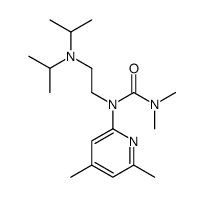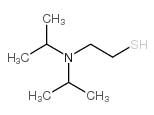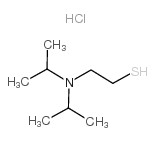4261-68-1
| 中文名 | 二异丙氨基乙基氯盐酸盐 |
|---|---|
| 英文名 | 2-Diisopropylaminoethyl chloride hydrochloride |
| 中文别名 |
二异丙氨基氯乙烷盐酸盐
2-二异丙基胺基氯乙烷盐酸盐 |
| 英文别名 |
2-Diisopropylaminoet
Deticen 2-Propanamine, N-(2-chloroethyl)-N-(1-methylethyl)-, hydrochloride (1:1) 2-Diisopropylaminoethylchloride HCl n-(2-chloroethyl)-n-isopropylpropan-2-aminium chloride DIISOPROPYLAMINOETHYL CHLORIDE HCL MFCD00012496 N-(2-chloroethyl)-N-(propan-2-yl)propan-2-amine hydrochloride (1:1) i-Pr2NCH2CH2Cl DIC hydrochloride N,N-Diisopropylaminoethyl chloride HCI 2-chloroethyldiisopropylammonium chloride EINECS 224-238-1 N-(2-Chloroethyl)-N-isopropylpropan-2-amine hydrochloride (1:1) Dacatic 2-Propanamine, N- (2-chloroethyl)-N-(1-methylethyl)-, hydrochloride N-(2-Chloroethyl)-N-isopropyl-2-propanamine hydrochloride (1:1) |
| 密度 | 0.909g/cm3 |
|---|---|
| 沸点 | 152.7ºC at 760 mmHg |
| 熔点 | 129-132 °C(lit.) |
| 分子式 | C8H19Cl2N |
| 分子量 | 200.149 |
| 闪点 | 46.1ºC |
| 精确质量 | 199.089462 |
| PSA | 3.24000 |
| LogP | 3.14600 |
| 外观性状 | 白色至黄色结晶粉末 |
| 储存条件 | 密闭,阴凉干燥处保存 |
| 稳定性 | 如果遵照规格使用和储存则不会分解,未有已知危险发生 |
| 水溶解性 | SOLUBLE |
| 计算化学 | 1.疏水参数计算参考值(XlogP):无 2.氢键供体数量:1 3.氢键受体数量:1 4.可旋转化学键数量:4 5.互变异构体数量:无 6.拓扑分子极性表面积3.2 7.重原子数量:11 8.表面电荷:0 9.复杂度:73.3 10.同位素原子数量:0 11.确定原子立构中心数量:0 12.不确定原子立构中心数量:0 13.确定化学键立构中心数量:0 14.不确定化学键立构中心数量:0 15.共价键单元数量:2 |
| 更多 | 1. 性状:白色或浅黄色晶体 2. 密度(g/mL,25/4℃):不确定 3. 相对蒸汽密度(g/mL,空气=1):不确定 4. 熔点(ºC):130-135 5. 沸点(ºC):不确定 6. 沸点(ºC,21mmHg):不确定 7. 折射率:不确定 8. 闪点(°F):不确定 9. 比旋光度(º, C=neat ):不确定 10. 自燃点或引燃温度(ºC):不确定 11. 蒸气压(kPa,25ºC):不确定 12. 饱和蒸气压(kPa,60ºC):不确定 13. 燃烧热(KJ/mol):不确定 14. 临界温度(ºC):不确定 15. 临界压力(KPa):不确定 16. 油水(辛醇/水)分配系数的对数值:不确定 17. 爆炸上限(%,V/V):不确定 18. 爆炸下限(%,V/V):不确定 19. 溶解性:溶于水 |
Synonym:2-Chloro-N,N-Diisopropylethylamine Hydrochloride; N-(2-Chloroethyl)diisopropylamine Hydrochloride; DIC Section 2 - COMPOSITION, INFORMATION ON INGREDIENTS
Risk Phrases: 23/24/25 Section 3 - HAZARDS IDENTIFICATION EMERGENCY OVERVIEW
Toxic by inhalation, in contact with skin and if swallowed.Hygroscopic (absorbs moisture from the air).The toxicological properties of this material have not been fully investigated. Potential Health Effects Eye: May cause eye irritation. Skin: May cause skin irritation. Ingestion: May cause irritation of the digestive tract. The toxicological properties of this substance have not been fully investigated. Inhalation: May cause respiratory tract irritation. May cause irritation of the respiratory tract with burning pain in the nose and throat, coughing, wheezing, shortness of breath and pulmonary edema. The toxicological properties of this substance have not been fully investigated. Chronic: No information found. Section 4 - FIRST AID MEASURES Eyes: Flush eyes with plenty of water for at least 15 minutes, occasionally lifting the upper and lower eyelids. Get medical aid. Skin: Get medical aid. Flush skin with plenty of water for at least 15 minutes while removing contaminated clothing and shoes. Wash clothing before reuse. Ingestion: Never give anything by mouth to an unconscious person. Get medical aid. Do NOT induce vomiting. If conscious and alert, rinse mouth and drink 2-4 cupfuls of milk or water. Wash mouth out with water. Inhalation: Remove from exposure and move to fresh air immediately. If not breathing, give artificial respiration. If breathing is difficult, give oxygen. Get medical aid. Do NOT use mouth-to-mouth resuscitation. Notes to Physician: Section 5 - FIRE FIGHTING MEASURES General Information: As in any fire, wear a self-contained breathing apparatus in pressure-demand, MSHA/NIOSH (approved or equivalent), and full protective gear. During a fire, irritating and highly toxic gases may be generated by thermal decomposition or combustion. Non-combustible, substance itself does not burn but may decompose upon heating to produce irritating, corrosive and/or toxic fumes. Extinguishing Media: Substance is noncombustible; use agent most appropriate to extinguish surrounding fire. Use water spray, dry chemical, carbon dioxide, or appropriate foam. Section 6 - ACCIDENTAL RELEASE MEASURES General Information: Use proper personal protective equipment as indicated in Section 8. Spills/Leaks: Vacuum or sweep up material and place into a suitable disposal container. Clean up spills immediately, observing precautions in the Protective Equipment section. Avoid generating dusty conditions. Provide ventilation. Section 7 - HANDLING and STORAGE Handling: Wash thoroughly after handling. Use with adequate ventilation. Avoid breathing dust, vapor, mist, or gas. Avoid contact with eyes, skin, and clothing. Keep container tightly closed. Avoid ingestion and inhalation. Use only in a chemical fume hood. Storage: Store in a cool, dry, well-ventilated area away from incompatible substances. Store protected from moisture. Section 8 - EXPOSURE CONTROLS, PERSONAL PROTECTION Engineering Controls: Facilities storing or utilizing this material should be equipped with an eyewash facility and a safety shower. Use adequate ventilation to keep airborne concentrations low. Exposure Limits CAS# 4261-68-1: Personal Protective Equipment Eyes: Wear appropriate protective eyeglasses or chemical safety goggles as described by OSHA's eye and face protection regulations in 29 CFR 1910.133 or European Standard EN166. Skin: Wear appropriate protective gloves to prevent skin exposure. Clothing: Wear appropriate protective clothing to prevent skin exposure. Respirators: A respiratory protection program that meets OSHA's 29 CFR 1910.134 and ANSI Z88.2 requirements or European Standard EN 149 must be followed whenever workplace conditions warrant respirator use. Section 9 - PHYSICAL AND CHEMICAL PROPERTIES Physical State: Crystalline powder Color: light beige Odor: none reported pH: Not available. Vapor Pressure: Not available. Viscosity: Not available. Boiling Point: Not available. Freezing/Melting Point: 133 - 135 deg C Autoignition Temperature: Not applicable. Flash Point: Not applicable. Explosion Limits, lower: Not available. Explosion Limits, upper: Not available. Decomposition Temperature: Solubility in water: soluble Specific Gravity/Density: Molecular Formula: (CH3)2CH!2NCH2CH2Cl.HCl Molecular Weight: 200.15 Section 10 - STABILITY AND REACTIVITY Chemical Stability: Stable at room temperature in closed containers under normal storage and handling conditions. Conditions to Avoid: Incompatible materials, dust generation, excess heat, exposure to moist air or water. Incompatibilities with Other Materials: Moisture, strong acids, strong bases, strong oxidizing agents. Hazardous Decomposition Products: Hydrogen chloride, nitrogen oxides, carbon monoxide, irritating and toxic fumes and gases, carbon dioxide. Hazardous Polymerization: Has not been reported. Section 11 - TOXICOLOGICAL INFORMATION RTECS#: CAS# 4261-68-1: TX1521900 LD50/LC50: CAS# 4261-68-1: Draize test, rabbit, eye: 100 mg Severe; Draize test, rabbit, skin: 500 mg/24H Severe; Inhalation, rat: LC50 = 12 mg/m3/4H; Oral, rat: LD50 = 96750 ug/kg; Skin, rabbit: LD50 = 197 mg/kg. Carcinogenicity: 2-Diisopropylaminoethyl Chloride Hydrochloride - Not listed by ACGIH, IARC, or NTP. Other: See actual entry in RTECS for complete information. Section 12 - ECOLOGICAL INFORMATION Section 13 - DISPOSAL CONSIDERATIONS Dispose of in a manner consistent with federal, state, and local regulations. Section 14 - TRANSPORT INFORMATION IATA Shipping Name: TOXIC SOLID, ORGANIC, N.O.S.* Hazard Class: 6.1 UN Number: 2811 Packing Group: III IMO Shipping Name: TOXIC SOLID, ORGANIC, N.O.S. Hazard Class: 6.1 UN Number: 2811 Packing Group: III RID/ADR Shipping Name: TOXIC SOLID, ORGANIC, N.O.S. Hazard Class: 6.1 UN Number: 2811 Packing group: III Section 15 - REGULATORY INFORMATION European/International Regulations European Labeling in Accordance with EC Directives Hazard Symbols: T Risk Phrases: R 23/24/25 Toxic by inhalation, in contact with skin and if swallowed. Safety Phrases: S 28A After contact with skin, wash immediately with plenty of water. S 36/37/39 Wear suitable protective clothing, gloves and eye/face protection. S 37 Wear suitable gloves. S 38 In case of insufficient ventilation, wear suitable respiratory equipment. S 45 In case of accident or if you feel unwell, seek medical advice immediately (show the label where possible). WGK (Water Danger/Protection) CAS# 4261-68-1: No information available. Canada CAS# 4261-68-1 is listed on Canada's NDSL List. CAS# 4261-68-1 is not listed on Canada's Ingredient Disclosure List. US FEDERAL TSCA CAS# 4261-68-1 is listed on the TSCA inventory. SECTION 16 - ADDITIONAL INFORMATION N/A |
|
毒理学数据: 主要的刺激性影响 在皮肤上面:刺激皮肤和粘膜 在眼睛上面:强烈的刺激性和造成严重伤害眼睛的危险 刺激的影响过敏作用:没有已知的敏化影响 生态学数据: 对水是稍微有危害的不要让未稀释或大量的产品接触地下水、水道或者污水系统, 若无政府许可,勿将材料排入周围环境
|
| 危害码 (欧洲) | T+:Verytoxic;C:Corrosive; |
|---|---|
| 风险声明 (欧洲) | R24/25;R26;R36/37/38 |
| 安全声明 (欧洲) | S26-S36/37/39-S45-S38-S28A |
| 危险品运输编码 | UN 2811 6.1/PG 1 |
| WGK德国 | 3 |
| RTECS号 | TX1521900 |
| 包装等级 | I |
| 危险类别 | 6.1 |
| 海关编码 | 29211980 |
|
~37% 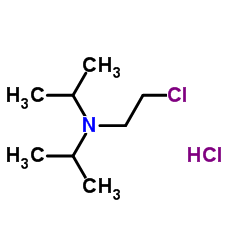
4261-68-1 |
| 文献:CHINA PHARMACEUTICAL UNIVERSITY; Xiang, Hua; Wang, Tianlin; Xiao, Hong; You, Qidong; Yao, Yao; Li, Xiaobo; Liao, Qingjiang Patent: US2013/85140 A1, 2013 ; Location in patent: Paragraph 0072; 0073 ; |
|
~% 
4261-68-1 |
| 文献:Mahmoudkhani, Amir Hossein; Langer, Vratislav Acta Crystallographica Section C: Crystal Structure Communications, 1999 , vol. 55, # 7 p. 1163 - 1167 |
|
~% 
4261-68-1 |
| 文献:Rohrmann; Shonle Journal of the American Chemical Society, 1944 , vol. 66, p. 1640 |
| 上游产品 3 | |
|---|---|
| 下游产品 8 | |
| 海关编码 | 2921199090 |
|---|---|
| 中文概述 | 2921199090 其他无环单胺及其衍生物及其盐。监管条件:无。增值税率:17.0%。退税率:9.0%。最惠国关税:6.5%。普通关税:30.0% |
| 申报要素 | 品名, 成分含量, 用途 |
| Summary | 2921199090 other acyclic monoamines and their derivatives; salts thereof VAT:17.0% Tax rebate rate:9.0% Supervision conditions:none MFN tariff:6.5% General tariff:30.0% |



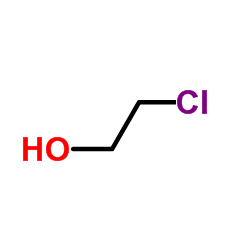
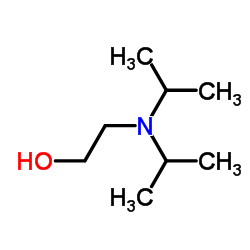
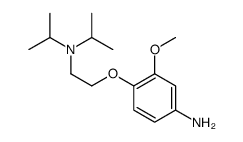
![N-[2-(4-methylphenyl)sulfonylsulfanylethyl]-N-propan-2-ylpropan-2-amine,hydrochloride结构式](https://image.chemsrc.com/caspic/210/139131-35-4.png)
![N-[2-(4-methylphenyl)sulfonylsulfanylethyl]-N-propan-2-ylpropan-2-amine结构式](https://image.chemsrc.com/caspic/410/139131-30-9.png)
![5'-Chloro-2'-[2-(diisopropylamino)ethoxy]butyrophenone结构式](https://image.chemsrc.com/caspic/282/20809-23-8.png)
